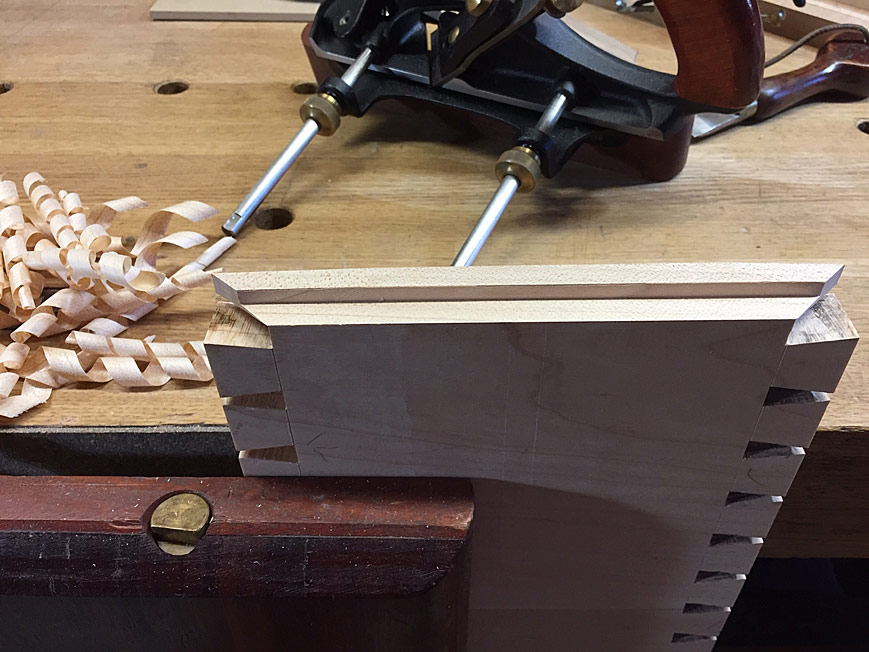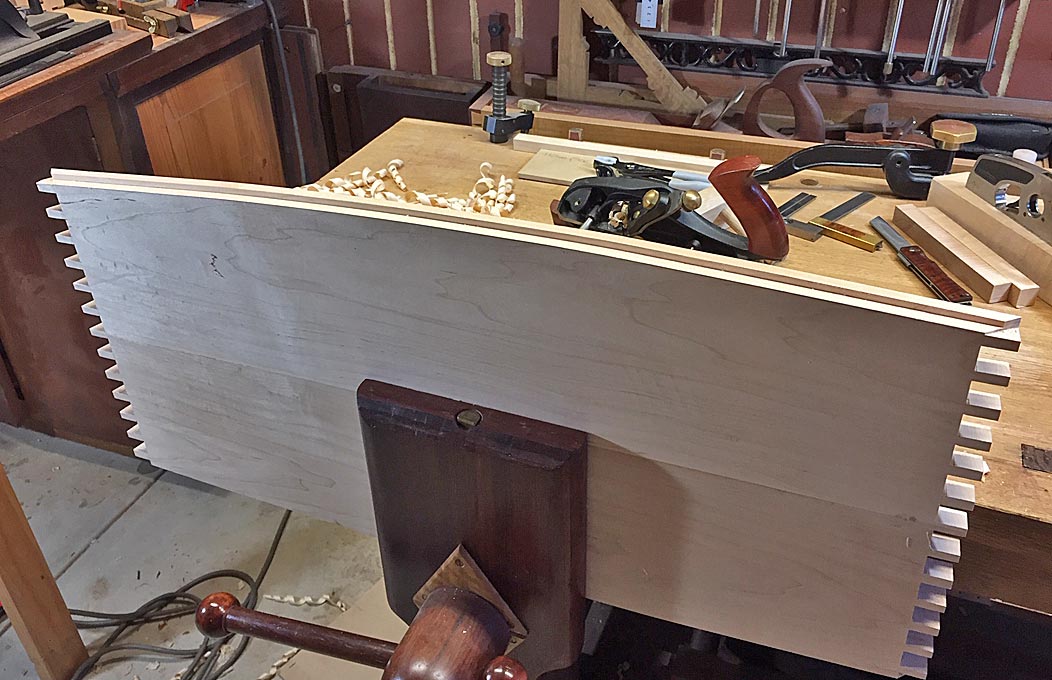Derek Cohen (Perth Oz)
Established Member
When my son Jamie was 10 years old, I build him a chest of drawers, somewhat Shaker-esque. This was an all-hand tools build, made easier as the wood used was Pine, with just Jarrah trim.
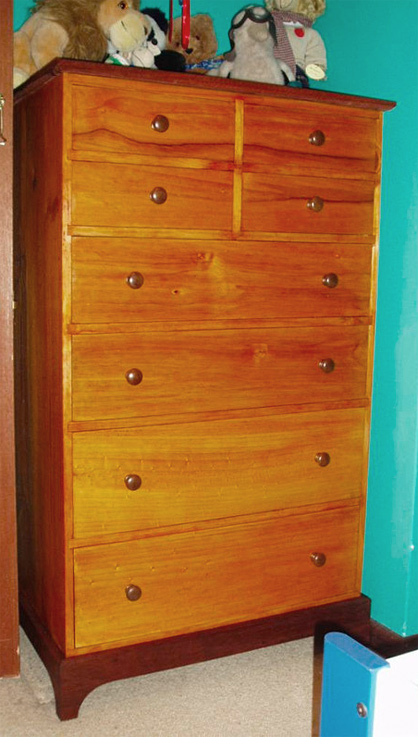
Jamie is now 29, married, and lives on the other side of Oz. He still has the chest of drawers, which is gratifying since he clearly treasures it (having said this, he asks me to build for him all the time - which I do - so perhaps he is just short of furniture).
In his last move, from Sydney to Canberra, the chest was dropped and the Jarrah base broke. It is not repairable, at least not by him. My wife and I are due to visit in February, and I said I would bring along a new base for the chest.
Now the issue is, how does one get it to him? It would be too expensive to ship. And the last time I carried (packaged) furniture on the plane to him (as hand luggage!), I was strip searched and treated like a possible terrorist. See: http://www.inthewoodshop.com/Furniture/CoffeeTableForJamie.html
I decided that the best way to do this would be to construct the base in knock-down format, and assemble it in Canberra. I also decided that the best joinery would be mitred through dovetails at the front corners, since these are mechanical joints, and would just require a little glue once there. The parts could either be rolled up and carried as hand luggage, or perhaps it might fit inside a suitcase. The base is 30" wide.
A while back I decided that I needed a better way to pare the mitre in mitred dovetails. Up until now, I used a mitred guide on top of the mitre to guide a chisel ...
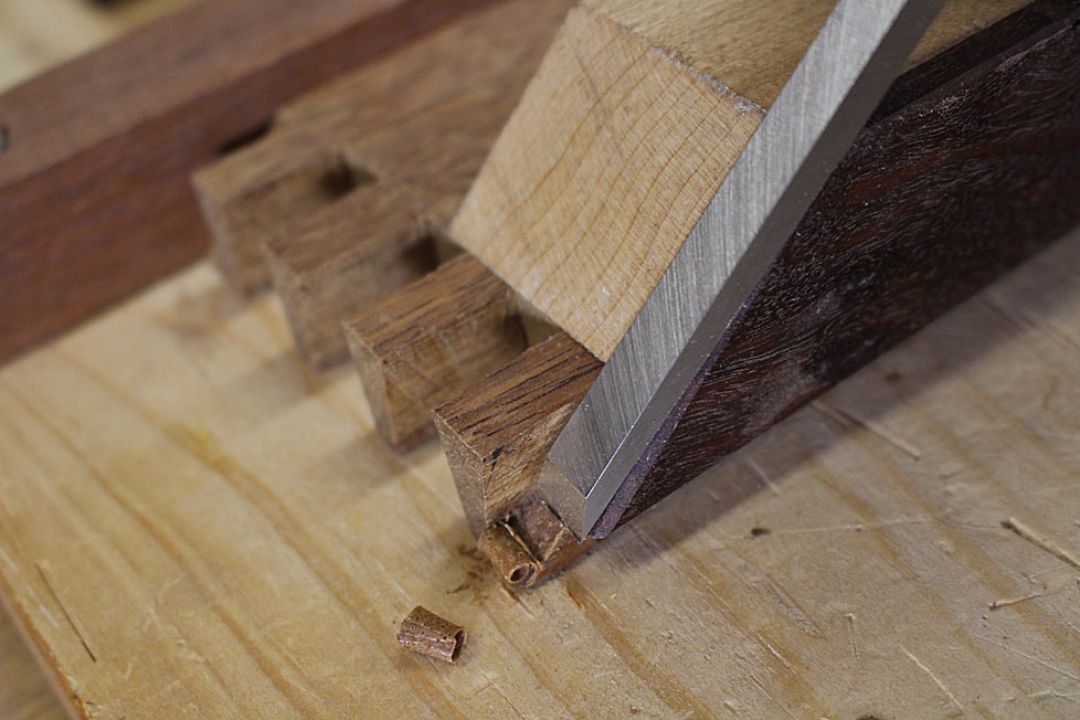
I have made a number of cases this way, and have not been happy with the method, the results of which can be unpredictable. The danger is that the chisel causes breakout at the edge of the mitre. Watching Japanese woodworkers, who use this joint quite frequently, more often as part of a blind dovetail (or secret mitred dovetail), they will pare the mitre from the side.
This is the fixture I built ...
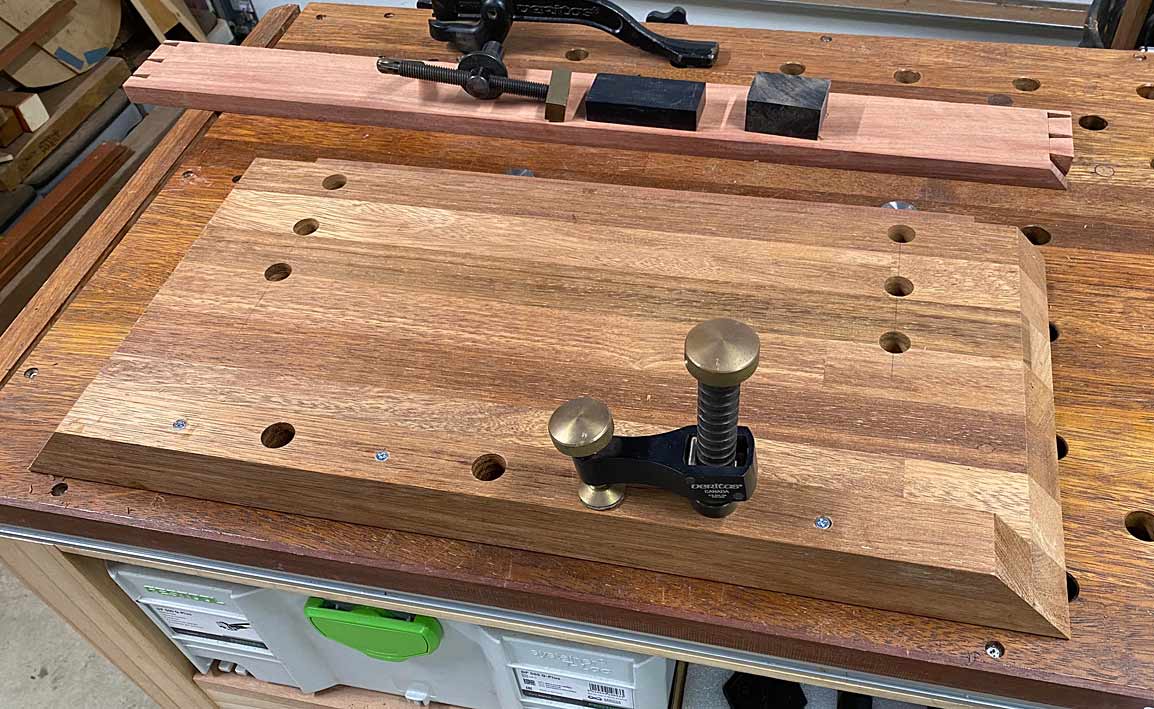
It is made with more of the Merbau panels (used for the MFT bench) as it is cheaper than plywood. The clamps used are by Veritas: Wonder Dog clamp and Surface clamp. The fixture rests against two small bench dogs at the rear.
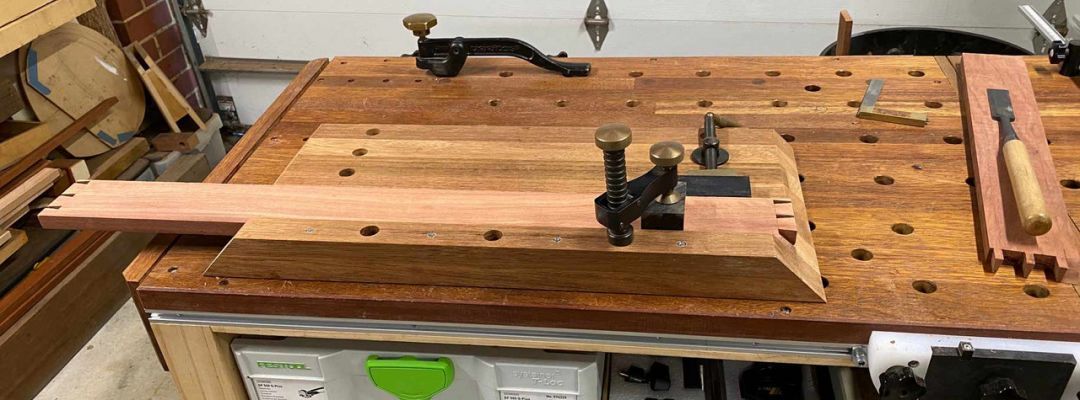

The method is to pare the mitre from the side ...
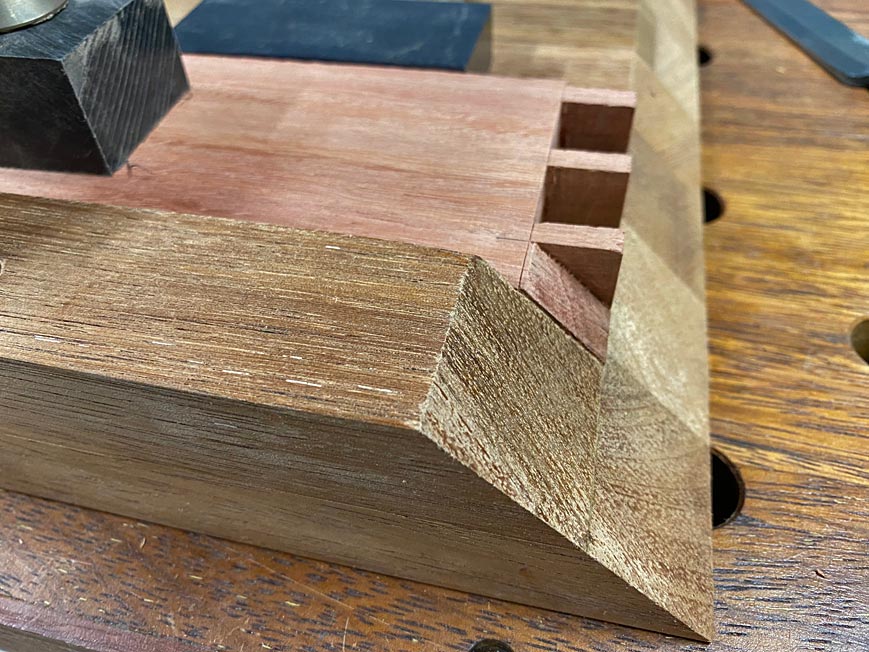
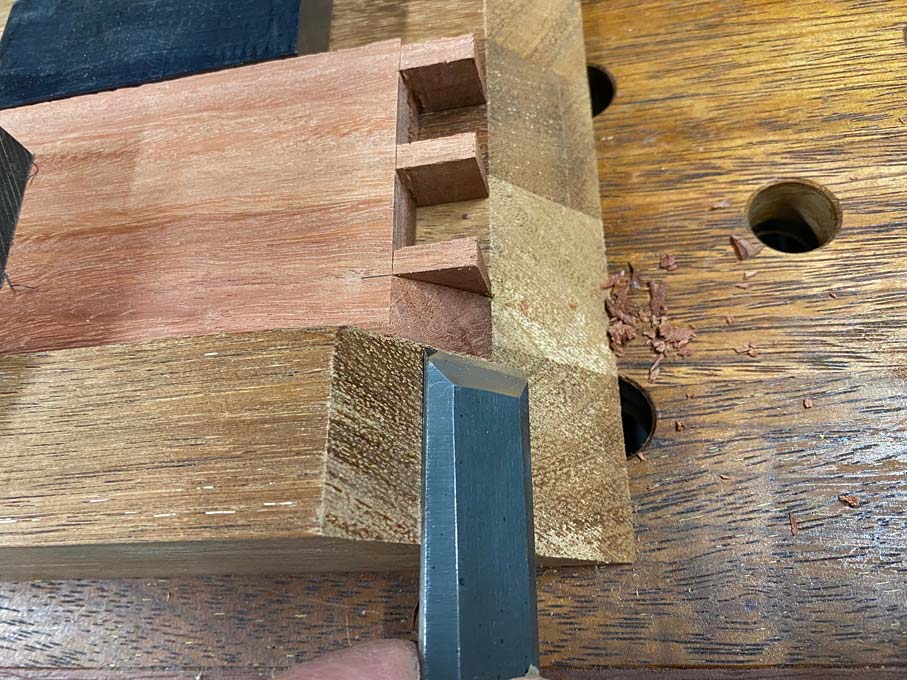
The fence/guide is only on one side as this makes it possible to use it on boards wider than the fixture itself.
The fixture is also reversible, for mitres on the other end of a board ..
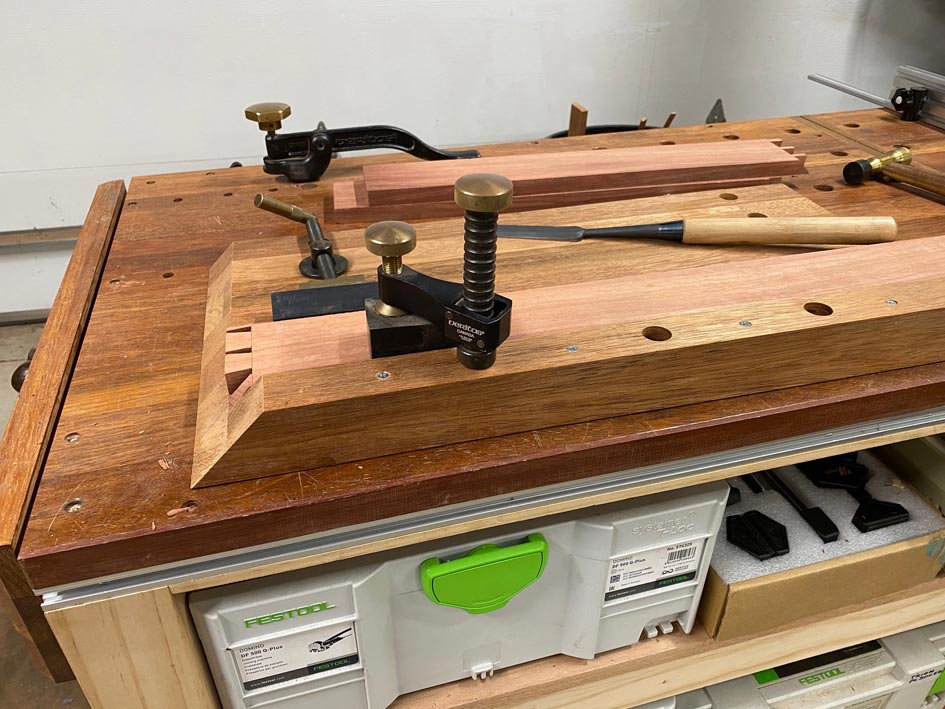
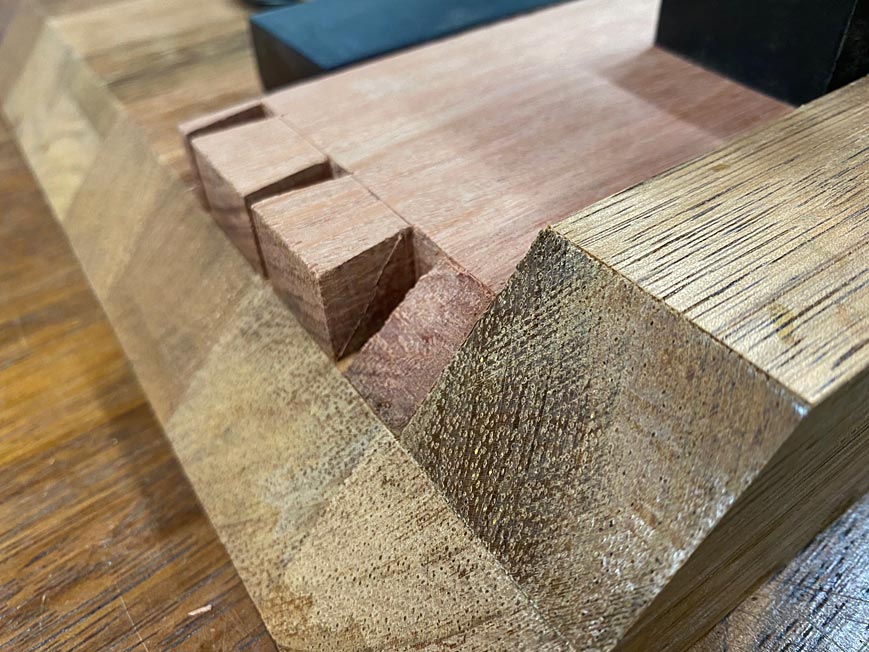
Pushing the joint together for the first time ..
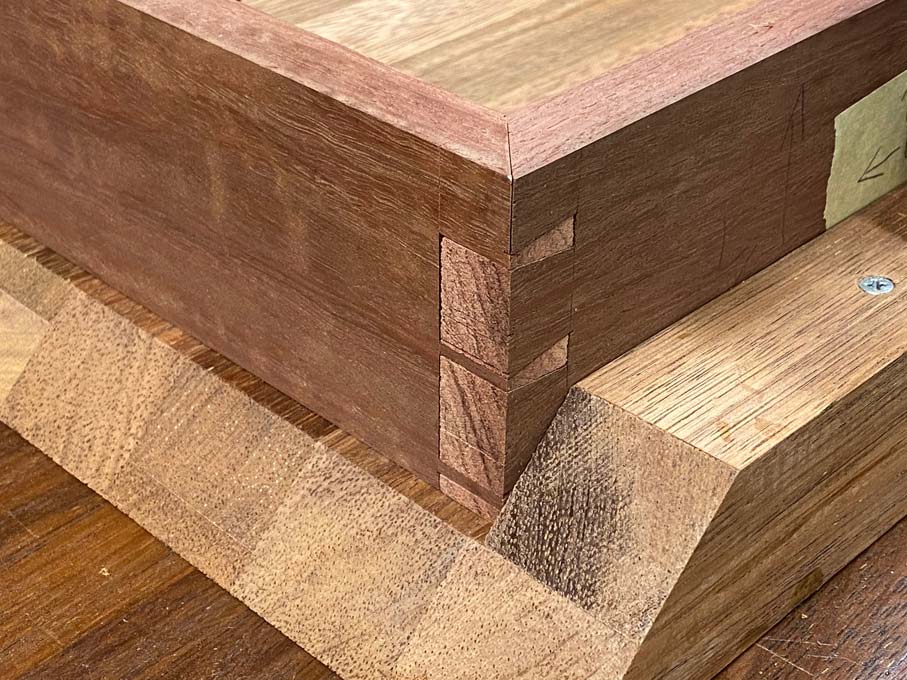
And a dry fit (prior to chamfers and internals being added) ..
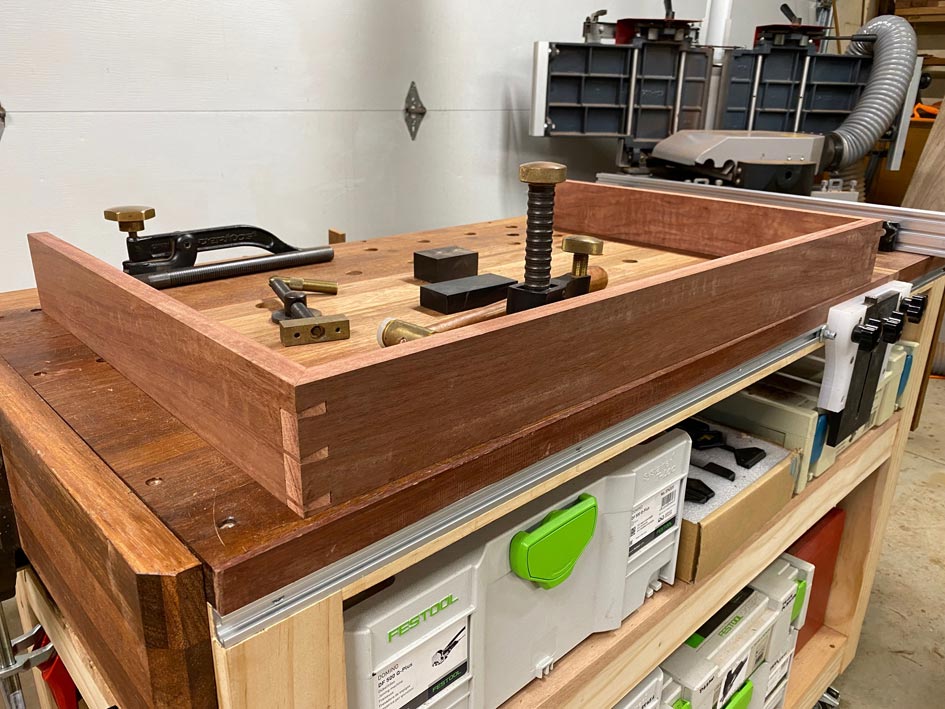
Regards from Perth
Derek

Jamie is now 29, married, and lives on the other side of Oz. He still has the chest of drawers, which is gratifying since he clearly treasures it (having said this, he asks me to build for him all the time - which I do - so perhaps he is just short of furniture).
In his last move, from Sydney to Canberra, the chest was dropped and the Jarrah base broke. It is not repairable, at least not by him. My wife and I are due to visit in February, and I said I would bring along a new base for the chest.
Now the issue is, how does one get it to him? It would be too expensive to ship. And the last time I carried (packaged) furniture on the plane to him (as hand luggage!), I was strip searched and treated like a possible terrorist. See: http://www.inthewoodshop.com/Furniture/CoffeeTableForJamie.html
I decided that the best way to do this would be to construct the base in knock-down format, and assemble it in Canberra. I also decided that the best joinery would be mitred through dovetails at the front corners, since these are mechanical joints, and would just require a little glue once there. The parts could either be rolled up and carried as hand luggage, or perhaps it might fit inside a suitcase. The base is 30" wide.
A while back I decided that I needed a better way to pare the mitre in mitred dovetails. Up until now, I used a mitred guide on top of the mitre to guide a chisel ...

I have made a number of cases this way, and have not been happy with the method, the results of which can be unpredictable. The danger is that the chisel causes breakout at the edge of the mitre. Watching Japanese woodworkers, who use this joint quite frequently, more often as part of a blind dovetail (or secret mitred dovetail), they will pare the mitre from the side.
This is the fixture I built ...

It is made with more of the Merbau panels (used for the MFT bench) as it is cheaper than plywood. The clamps used are by Veritas: Wonder Dog clamp and Surface clamp. The fixture rests against two small bench dogs at the rear.


The method is to pare the mitre from the side ...


The fence/guide is only on one side as this makes it possible to use it on boards wider than the fixture itself.
The fixture is also reversible, for mitres on the other end of a board ..


Pushing the joint together for the first time ..

And a dry fit (prior to chamfers and internals being added) ..

Regards from Perth
Derek

































